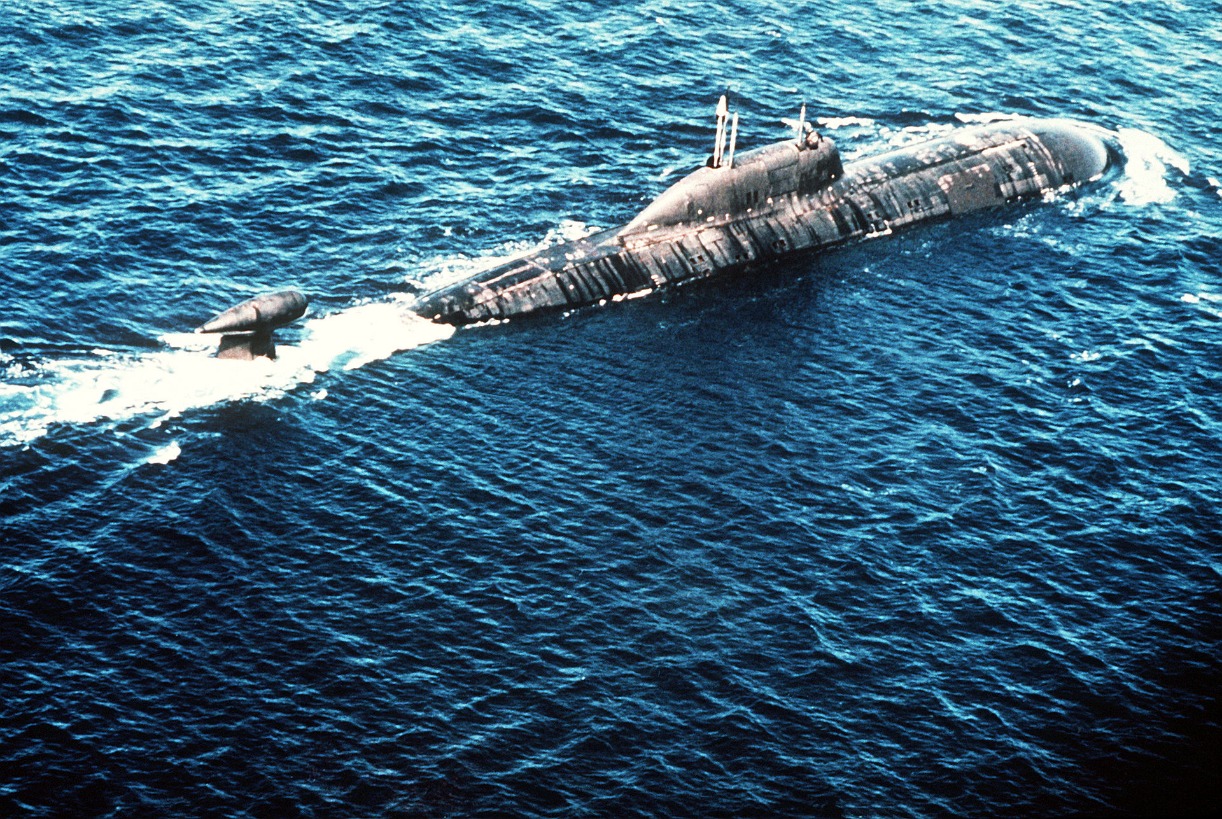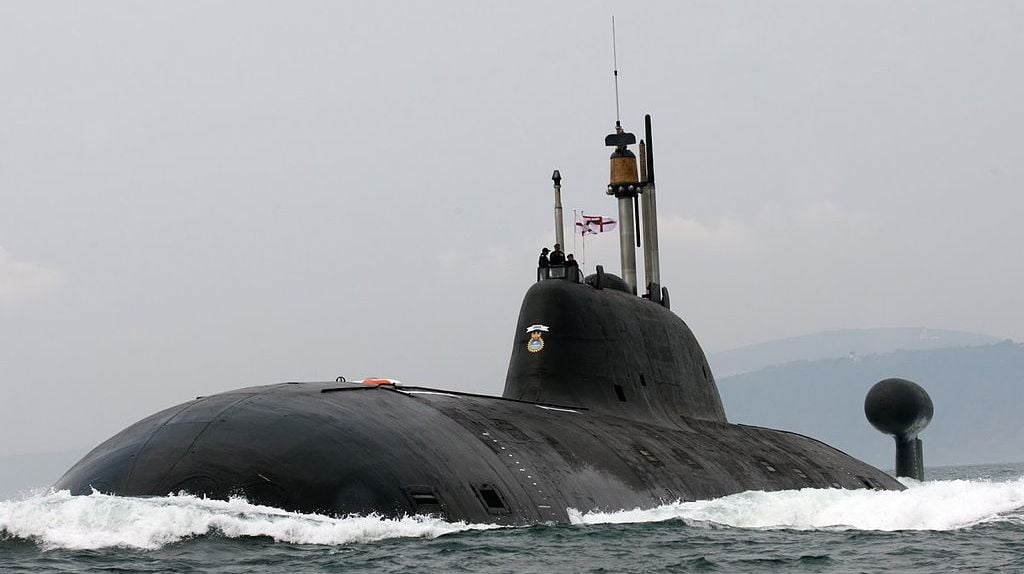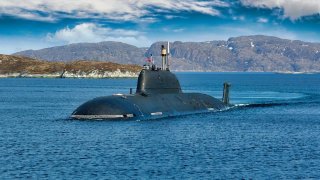Akula: The Russian Submarines That Makes U.S. Navy Admirals Sweat
The Soviet Union introduced the Akula-class Submarines in the mid-1980s, and nearly three decades later, they remain a vital part of Russia's naval capabilities.
Summary: The Akula-class submarines, introduced by the Soviet Union in the mid-1980s, remain a vital part of Russia's naval capabilities nearly three decades later. Designed to compete with America's Los Angeles-class SSNs, the Akula featured advanced sonar systems, new weaponry, and reliable nuclear reactors. Post-Soviet Russia continued to use the Akula-class, even leasing an Akula II variant to India. Although initially intended for broader production, economic constraints post-USSR collapse limited the Akula II to just a few units. Today, the Akula-class serves with advanced sensors and weaponry, including long-range cruise missiles, maintaining its relevance in modern naval warfare.

Akula-Class Submarines: Decades of Dominance in Russia's Naval Strategy
After nearly 30 years in service, the Soviet-designed Akula-class submarine is still an important and capable component of Russia’s naval forces.
The later Akula II submarine was designed to rival America’s Los Angeles-class nuclear-powered subs (SSNs). From enhanced sonar systems to new weaponry and nuclear reactors, the Soviet submarine made a strong impression when it was first introduced to service. After the Soviet Union collapsed, Russia maintained the SSN by leasing the class’ lone ship to India. Today, the Akula II is back in the hands of the Russian Navy, where it will continue to serve for years ahead.
Introducing the Akula-Class Submarine
When the Soviets first debuted the Akula class in the mid-1980s, American officials were surprised. Western intelligence had suggested that the USSR was at least a decade away from achieving the advanced technology held in the vessels.
The Akula I submarine was constructed by the Amur Shipbuilding Plant Joint Stock Company at Komsomolsk, and by Sevmash at the Severodvinsk shipbuilding yard. The first seven boats in the class are the Puma, Delphin, Kashalot, Kit, Pantera, Bars, and Narvel. An improved Akula-class variant includes the Volk, Morzh, Leopard, Tigr, and Drakon. The Akula was designed with a double hull system that consisted of an internal pressure hull and a lighter outer layer. The structure gave Soviet engineers more flexibility than Western counterparts had in building a submarine class’ exterior hull.
A distinctive bulb-like structure on the Akula’s top houses the ship’s sonar array. Each ship in the class is powered by one OK-650B pressurized water reactor, the same system installed onto several of its Soviet-designed predecessors. When the OK-650 was first introduced in the 1970s, it was considered to be a more reliable power source than previous designs. This reactor has been incorporated on the Sierra I, Sierra II, the Oscar I, Oscar II and Typhoon-class submarines.
Each submarine in the Akula series is equipped with four 533 mm torpedo tubes, which use Type 53 torpedoes as well as RPK-2 and RPK-6 missiles, and four 650 mm torpedo tubes, which use Type 65 torpedoes or RPK-7 missiles.

Today, the Akula ships can carry up to a dozen Granit submarine-launched cruise missiles, which have a range of roughly 3,000 kilometers. Anti-ship missiles incorporated on the submarines include the Novator SS-N-15 Starfish and the Novator SS-N-16 Stallion. The Starfish has a range of roughly 45 km, while the Stallion has a longer range of up to 100 km.
The Akula class’ sensor suite is more advanced than earlier Soviet ship designs. Specifically, the Akula’s surface search radar is the Snoop Pair. As explained by Naval Technology, “The submarine is fitted with the MGK 540 sonar system which provides automatic target detection in broad and narrow-band modes by active sonar. It gives the range, relative bearing and range rate. The sonar system can also be used in a passive, listening mode for detection of hostile sonars. The sonar signal processor can detect and automatically classify targets as well as reject spurious acoustic noise sources and compensate for variable acoustic conditions.”
Introducing the Akula II
The Soviets hoped to produce several Akula II variants, but they did not get that far. Designated by the USSR as Project 971U, the sole Vepr submarine was commissioned by the mid-1990s. Two additional planned submarines (Rys K-333 and Kuguar K-337) were later broken down and used in the construction of the Alexander Nevsky and Yury Dolgorukiy. The Akula II displaces approximately 700 tons more than its sister variant and measures about 3 meters longer.
Following the collapse of the USSR, budgetary constraints led to the dismantling of several Soviet military programs. Instead of decommissioning the Akula II, the new Russian government opted to lease the submarine to the Indian government. In 2021, the submarine was returned to Russia with damage to its nuclear reactor.
About the Author: Maya Carlin
Maya Carlin, National Security Writer with The National Interest, is an analyst with the Center for Security Policy and a former Anna Sobol Levy Fellow at IDC Herzliya in Israel. She has by-lines in many publications, including The National Interest, Jerusalem Post, and Times of Israel. You can follow her on Twitter: @MayaCarlin.
All images are Creative Commons.


